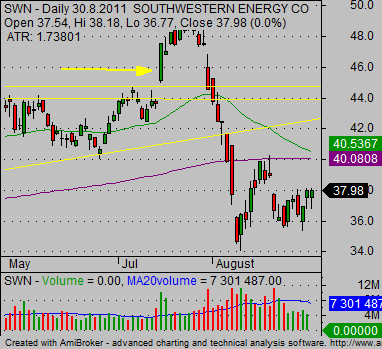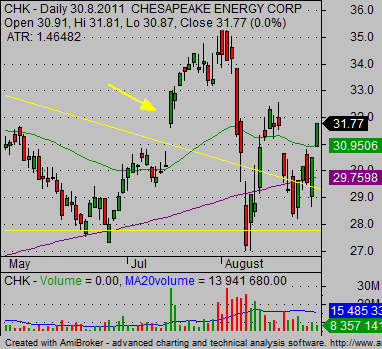All of my trading setups are based on stock charts technical analysis. The whole process is based on simple steps but the number of steps is not small. It could look like preparation of every setup is a complicated task. But in reality you will see that it is not so complicated – it is simple.
But please understand that I am looking for the best technical picks available in the actual market situation so I do not want to do things in a hurry. I want to make stock charts technical analysis properly. I do not need to find tens of possible trading setups and have many technical analysis charts saved as my opportunities.
The process for selecting of stock to trade is followed by detailed technical analysis which should help in setting an entry level for my trade. The expected target and exit point is prepared in accordance with technical analysis of stocks charts.
I also use stock charts technical analysis to find a good risk level for my stop loss. This stop loss level is the ultimate place where I think that my trade setup idea is already proved wrong and I must exit the trade. All these levels I put into my risk management Excel calculator. This Excel sheet produces position size details for my trade setup.
And when everything passes I put this best stock pick setup into my Excel daily plan for intraday monitoring. I setup alerts in my trades execution software accordingly to be alerted if the price moves close to my entry level.
The gap on a stock chart should warn you
Then the trading day begins and sometimes it prepares a surprise for me. The price open much higher than my trigger price for entry is.
So should I enter the trade on a new level much higher than my trade setup expected? The correct answer is no.
Trading is difficult enough as it is and as such, our strategy is to always place ourselves in the best possible position to increase the likelihood of a profitable trade. This means that a good trader never chase trades and force something if it hasn’t hit our desired level.
Stock trading methodology relies heavily on a specific risk/reward that if only tampered with slightly, can result in a significant deterioration to our P&L. We always want to be in a position where if the trade doesn’t go our way (and it does happen), there is no room for excuses and we can walk away completely comfortable with the loss.
If the prepared entry level is not hit, then a good trader is quite happy to move forward to the next opportunity. The market is there for us each and every day.
Chasing trades always leads to violation of our money management rules, which leads more often then not to larger losses than we would like to accept. And also there is often an opportunity to wait for a pullback and prepare a new setup with similar characteristics like the former setup.
You can see on these examples of stock charts technical analysis that chasing an entry is not always profitable and can lead to big losses.


Arrows on both charts point to levels where this setup for buy entry was prepared. But a strong move or initial gap up during a day could make entry impossible.
And as you can see on the charts if the trader chased entry and entered position much above the desired entry level, then he could experience a much bigger loss after a pullback in the stock.
A patient trader waits, and as you can see there could be the possibility to prepare a new setup for long entry in CHK shares soon.
Find more on related pages
- Study advanced entry ideas for chart patterns trading strategies
- Use profitable selling stocks short using gaps
- Collect more ideas for your personal stock trade system